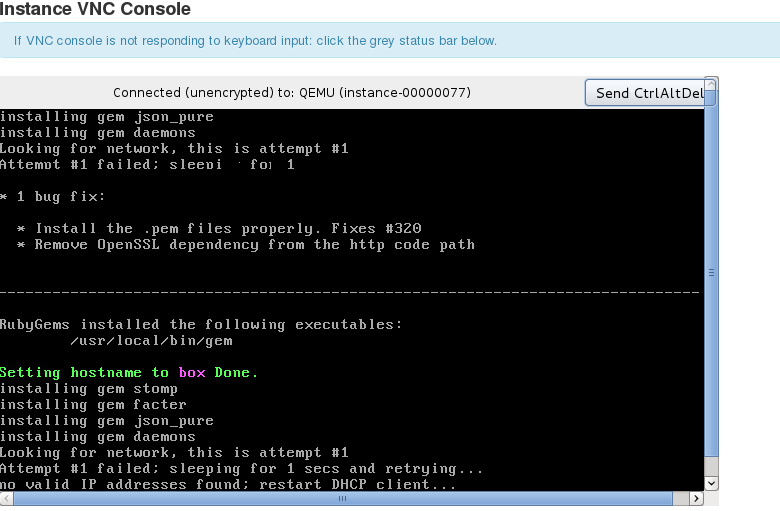A Debian GNU/Linux Wheezy Beta 2 AMI is uploaded to OpenStack. It really is an Ext4 file system that OpenStack will resize to use all the size of the primary disk of the instance. An AMI is made of three files, the kernel (the AKI), the ramdisk (the ARI) used at boot time and the file system to boot from (the AMI). In OpenStack, the AMI is specified to the nova boot … –image command line.
# glance index name='Debian GNU/Linux Wheezy Beta2'
ID
------------------------------------
a8f86804-3927-419e-9612-ad35cbafefa0
Name Disk Format Container Format
------------------------------ -------------------- --------------------
Debian GNU/Linux Wheezy Beta2 ami ami
It contains references to the required AKI and ARI, as shown below:
# nova image-show a8f86804-3927-419e-9612-ad35cbafefa0
+---------------------+--------------------------------------+
| Property | Value |
+---------------------+--------------------------------------+
| created | 2012-09-30T15:26:43Z |
| id | a8f86804-3927-419e-9612-ad35cbafefa0 |
| metadata kernel_id | 2e714ea3-45e5-4bb8-ab5d-92bfff64ad28 |
| metadata ramdisk_id | 6458acca-24ef-4568-bb2b-e52322a5a11c |
| minDisk | 0 |
| minRam | 0 |
| name | Debian GNU/Linux Wheezy Beta2 |
| progress | 100 |
| status | ACTIVE |
| updated | 2012-09-30T15:26:45Z |
+---------------------+--------------------------------------+
Continue reading “Minimal Debian GNU/Linux wheezy bootable image for OpenStack”


